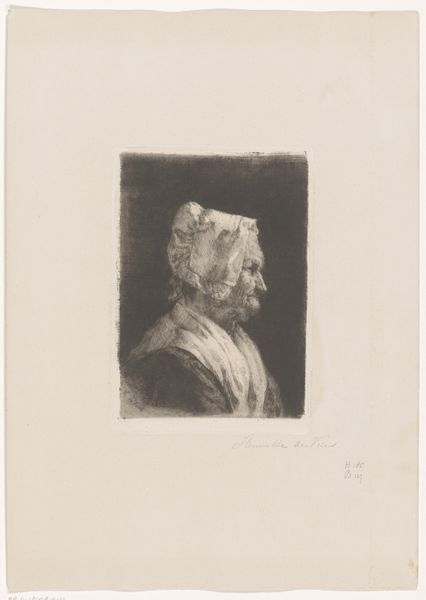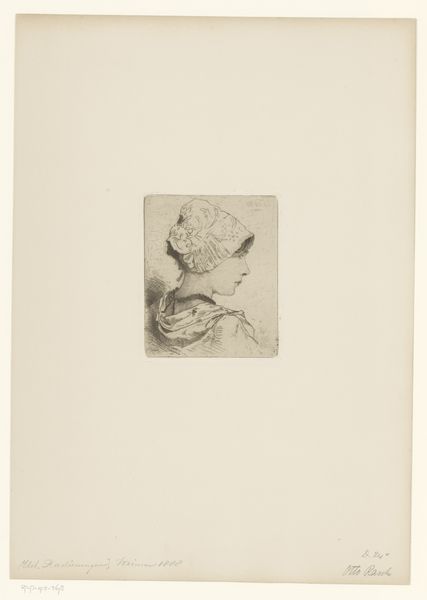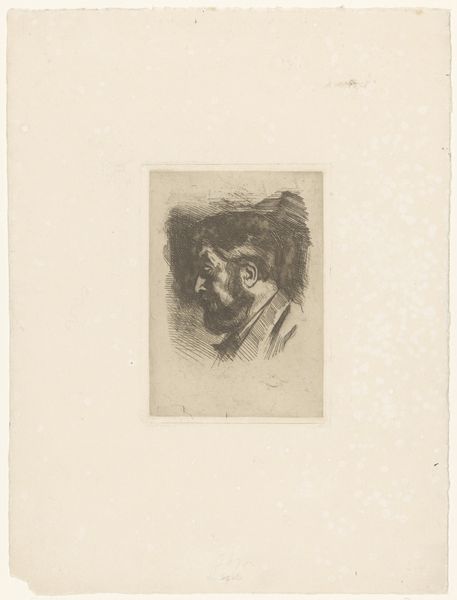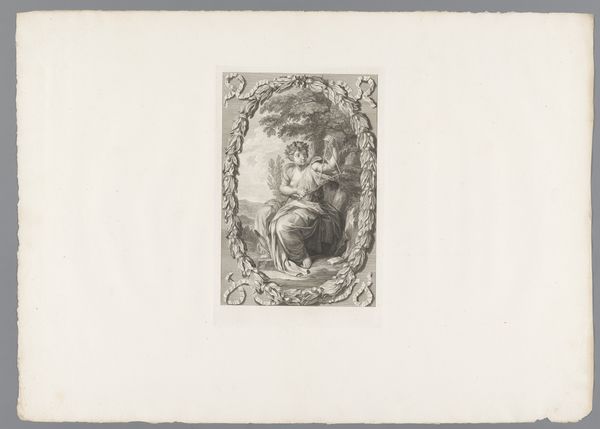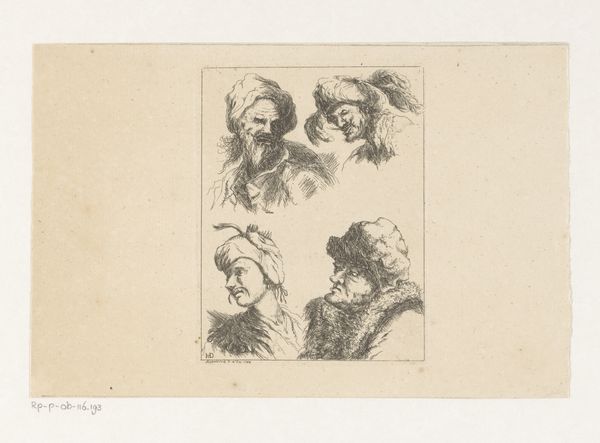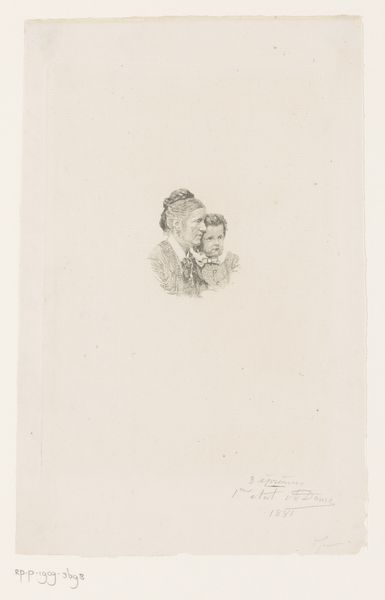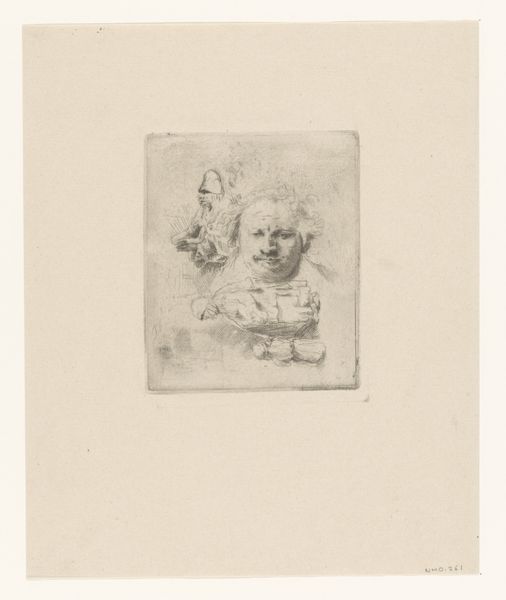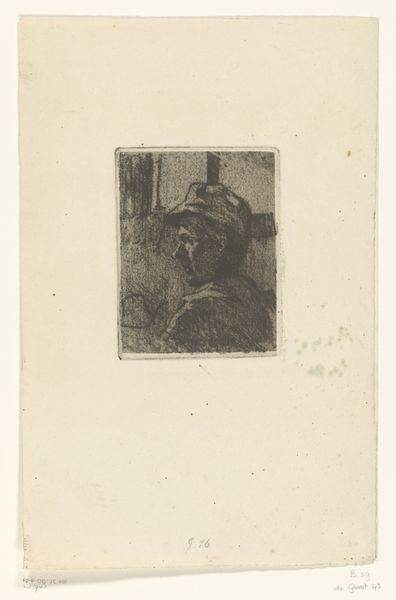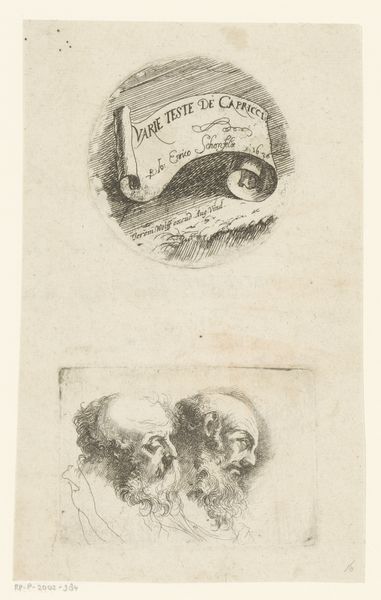
Old Man Wearing Turban Ornamented with Fur(upper) c. 17th century
0:00
0:00
drawing, print, etching
#
portrait
#
drawing
#
baroque
# print
#
etching
Dimensions: 4 1/4 x 3 1/8 in. (10.8 x 7.94 cm) (image, sheet, top image)4 1/4 x 3 3/16 in. (10.8 x 8.1 cm) (image, sheet, lower image)11 7/8 x 9 1/4 in. (30.16 x 23.5 cm) (mount)18 x 4 1/16 in. (45.72 x 10.32 cm) (mat)
Copyright: Public Domain
Editor: This etching by Giovanni Benedetto Castiglione, "Old Man Wearing Turban Ornamented with Fur(upper)," made around the 17th century, strikes me as intensely intimate. The figures feel very close and immediate. What can you tell me about it? Curator: Well, let’s unpack this perceived intimacy. Etchings, especially in this era, were often exercises in character studies. Castiglione gives us two. Who were these figures? Probably not nobility, but types. Consider the role of the turban. It wasn't simply a fashion statement, it could signal connections to the Ottoman Empire, to trade, even to religious syncretism, so common in the 17th century. Editor: So the turban becomes a signifier of something beyond just an item of clothing. Almost a political statement? Curator: Precisely! In Baroque portraiture, dress and accoutrements often performed complex ideological work. Look also at the use of line. What does that say about perceptions and realities? The very deliberate rendering of age and experience isn’t always an empathetic one. Is this an idealized representation, or one rooted in observation of people Castiglione actually knew? Editor: I never thought about etchings having that layer of social commentary. I see them more as exercises, skill building before "real" art. Curator: That's a perspective rooted in modern hierarchies! In Castiglione's time, prints were vital for disseminating ideas, building connections. They had impact! What do you think we risk by only viewing etchings through an aesthetic lens, divorced from socio-political realities? Editor: We lose a lot, I guess. By recognizing these figures as situated within a network of power dynamics, it invites a dialogue that simply isn't available by focusing solely on technique. Curator: Exactly. And remember, art never exists in a vacuum. This etching might then tell us about more than two old men—it gives us access to broader ideas.
Comments
No comments
Be the first to comment and join the conversation on the ultimate creative platform.
